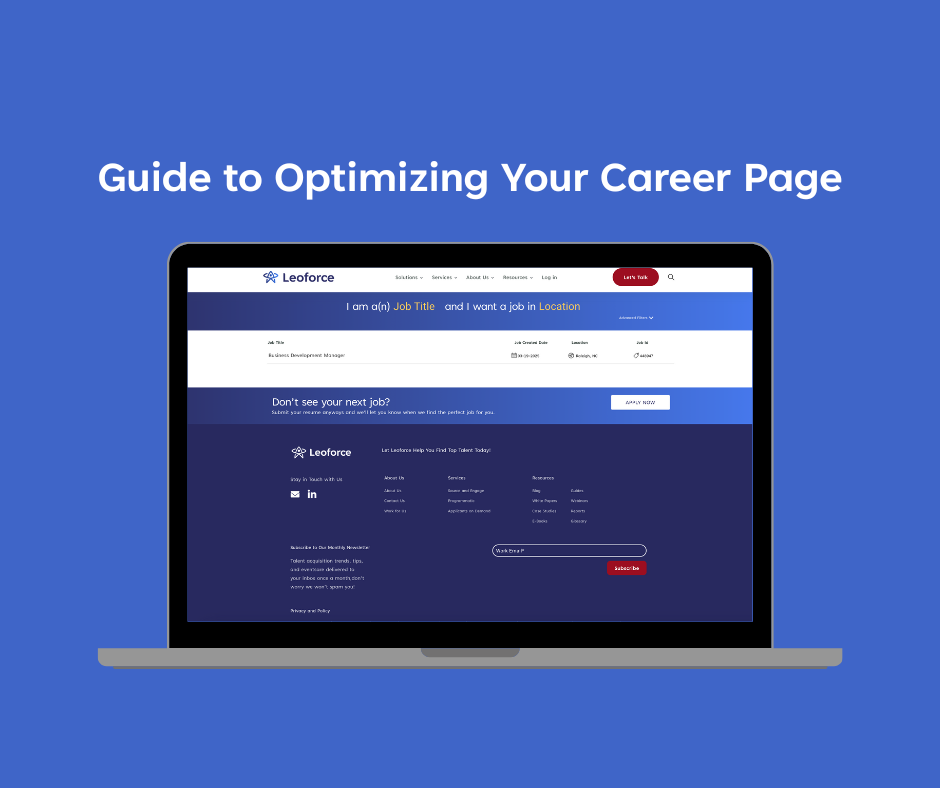US States with the Most Nurses Shortages and How to Fill Them

Yet another medical crisis is expected to hit the United States very soon. The United States is facing an acute shortage of nurses and inaction is probably going to jeopardize the services of healthcare institutions across the country in the distant future.
As of 2023, the United States employs over 5.3 million healthcare professionals serving as nurses.
Here is a breakdown of the number of nurses by employment category
|
Type of nurse employment |
Total number |
| Registered Nurse (RN) |
2,986,500 |
|
Certified Nursing Assistant (CNA) |
1,371,050 |
| Licensed Practical/Licensed Vocational Nurse (LPN/LVN) |
676,440 |
|
Nurse Educator (NE) |
61,100 |
|
Nurse Midwife (CNM) |
7,120 |
| Nurse Practitioner (NP) |
211,280 |
|
Certified Registered Nurse Anesthetist (CRNA) |
41,960 |
| Total Number of Nurses |
5,355,450 |
Of these numbers, the total number of registered nurses can be further categorized by State. The table below illustrates the projected demand and supply in the year 2030. It also illustrates the surplus or deficit number of registered nurses by 2030 and the States that are likely to face a surplus or shortage.
|
State |
Projected demand by 2030 | Projected supply by 2030 | Difference in numbers |
Deficit/surplus |
|
California |
387,900 | 343,400 | 44,500 | Deficit |
| Massachusetts | 89,300 | 91,300 | 2000 |
Deficit |
|
Alaska |
23,800 | 18,400 | 5,400 | Deficit |
| New York | 195,200 | 213,400 | 18,200 |
Surplus |
|
New Jersey |
102,200 | 90,800 | 11,400 | Deficit |
| Maryland | 73,900 | 86,000 | 12,100 |
Surplus |
|
Arizona |
98,700 | 99,900 | 1,200 | Deficit |
| Colorado | 63,200 | 72,500 | 9,300 |
Surplus |
|
New Mexico |
21,600 | 31,300 | 9,700 | Surplus |
| Georgia | 101,000 | 98,800 | 2,200 |
Deficit |
|
Delaware |
12,800 | 14,000 | 1,200 | Deficit |
| Texas | 269,300 | 253,400 | 15,900 |
Deficit |
|
New Hampshire |
20,200 | 21,200 | 1,300 | Deficit |
| Virginia | 86,500 | 109,200 | 22,700 |
Surplus |
|
Vermont |
6,800 | 9,300 | 2,500 | Deficit |
| Florida | 240,000 | 293,700 | 53,700 |
Surplus |
|
Ohio |
132,800 | 181,900 | 49,100 | Surplus |
| Montana | 12,100 | 12,300 | 200 |
Deficit |
|
Kentucky |
53,700 | 64,200 | 10,500 | Surplus |
| North Carolina | 118,600 | 135,100 | 16,500 |
Surplus |
|
Louisiana |
49,700 | 52,000 | 2,300 | Deficit |
| Indiana | 75,300 | 89,300 | 14,000 |
Surplus |
|
North Dakota |
9,200 | 9,700 | 700 | Deficit |
| South Carolina | 62,500 | 52,100 | 10,400 |
Deficit |
|
Tennessee |
82,200 | 90,600 | 8,400 | Surplus |
| Missouri | 73,200 | 89,900 | 16,700 |
Surplus |
|
Iowa |
35,300 | 45,400 | 10,100 | Surplus |
| Arkansas | 32,300 | 42,100 | 9,800 |
Surplus |
|
South Dakota |
13,600 | 11,700 | 1,900 |
Deficit |
From the above illustrated table, we can understand that the States of California, Texas, New Jersey and South Carolina are likely to face a severe deficit of registered nurses. On the other hand, the States of Florida, New York, Missouri and North Carolina are expected to see a surplus of registered nurses by 2030 – this will likely lead to a drop in the average pay scale in states with a surplus. Similarly, states with a deficit are likely to witness an upward trajectory in terms of pay.
Here is a table to better illustrate the current average pay in 50 US States
|
State |
Average pay per hour |
Average pay per year |
|
California |
$64.10 | $133,340 |
| Hawaii | $54.43 |
$113,220 |
|
Oregon |
$51.26 | $106,610 |
| Massachusetts | $50.07 |
$104,150 |
|
Alaska |
$49.67 | $103,310 |
| Washington | $48.88 |
$101,670 |
|
New York |
$48.14 | $100,130 |
| District of Columbia | $47.23 |
$98,230 |
|
New Jersey |
$46.48 | $96,670 |
| Nevada | $46.30 |
$96,310 |
|
Connecticut |
$45.32 | $94,260 |
| Minnesota | $42.72 |
$88,860 |
|
Rhode Island |
$42.43 | $88,250 |
| Maryland | $42.30 |
$87,990 |
|
Arizona |
$41.70 | $86,740 |
| Colorado | $41.63 |
$86,590 |
|
New Mexico |
$41.15 | $85,580 |
| Georgia | $40.95 |
$85,180 |
|
Delaware |
$40.88 | $85,020 |
| Texas | $40.54 |
$84,320 |
|
New Hampshire |
$40.11 | $83,420 |
| Illinois | $39.53 |
$82,220 |
|
Virginia |
$39.36 | $81,860 |
| Wyoming | $38.95 |
$81,010 |
|
Wisconsin |
$38.94 | $81,000 |
| Michigan | $38.78 |
$80,660 |
|
Pennsylvania |
$38.76 | $80,630 |
| Vermont | $38.46 |
$79,990 |
|
Florida |
$38.42 | $79,910 |
| Idaho | $37.79 |
$78,610 |
|
Ohio |
$37.72 | $78,450 |
| Montana | $37.67 |
$78,350 |
|
Kentucky |
$37.32 | $77,620 |
| Maine | $37.22 |
$77,410 |
|
North Carolina |
$37.22 | $77,410 |
| Oklahoma | $36.98 |
$76,920 |
|
Utah |
$36.73 | $76,400 |
| Louisiana | $36.50 |
$75,920 |
|
Indiana |
$36.34 | $75,580 |
| North Dakota | $36.06 |
$75,000 |
|
South Carolina |
$35.74 | $74,330 |
| Nebraska | $35.34 |
$73,510 |
|
Tennessee |
$34.85 | $72,480 |
| West Virginia | $34.73 |
$72,230 |
|
Kansas |
$34.61 | $71,990 |
| Missouri | $34.55 |
$71,860 |
|
Iowa |
$33.35 | $69,370 |
| Mississippi | $32.66 |
$67,930 |
|
Alabama |
$32.17 | $66,910 |
| Arkansas | $31.98 |
$66,530 |
|
South Dakota |
$31.01 |
$64,500 |
Suggested Reading: 2023 Salary Guide for US Nurse Practitioners
What can the States do to reduce the nurse shortage?
Evidently, it’s critical to reduce the nursing shortage. But one can understand how complicated the efforts can be. So, keeping past experiences and futuristic technology in mind, experts in healthcare recruitment suggest the following measures.
Optimize nurse staffing agencies
Medical staffing agencies have increasingly become the need of the hour. In order to resolve healthcare staffing shortages, medical staffing agencies assist and aid hospitals, clinics, nursing homes, and other healthcare organizations in medical recruitment. Through extensive research and cutting-edge technology driven recruitment solutions, medical staffing agencies provide healthcare institutions with the right talent to fill their vacant positions. These agencies provide complete end-to-end staffing solutions; from sourcing, screening, to filtering candidates, in order to help you find the best talent for your healthcare needs. They also offer various additional services, such as credentialing, background checks, and onboarding, to ensure their candidates meet the necessary qualifications and are ready to work.
Medical Staffing Solutions
Healthcare staffing agencies provide complete, end-to-end solutions for your healthcare staffing shortages. Through deep research and cutting-edge technology-driven recruitment solutions, medical staffing agencies have become the backbone for all hospitals, clinics, nursing homes, and other healthcare organizations when it comes to staffing shortages.
Using AI-based recruitment solutions
By using AI-based recruitment solutions, recruiters can significantly cut down the time taken to hire medical professionals. AI-based solutions can easily post information about job availability, shortlist and categorize applications, conduct skill assessments and even schedule interviews. These solutions not only save time, they also eliminate recruiter bias. The advanced AI in Leoforce is revolutionizing the healthcare recruiting industry by using 300+ parameters and 7 multi-dimensional data points to score and rank talent for compatibility. Leoforce simultaneously helps source candidates from multiple channels in under 5 minutes, reducing candidate review and shortlisting time by 50%. Request a Demo to understand how Leoforce can help your organization streamline its healthcare staffing challenges in time to avoid a nursing shortage crisis.
Using AI-based medical solutions
Artificial Intelligence software can be used to help detect early signs of genetic conditions and terminal illnesses like cancer; it can help in managing medical databases; it can act as a virtual health assistant and even be used for complicated surgical procedures as assistant surgical bots. By using AI-based medical solutions, healthcare institutions can reduce the burden on nurses and medical professionals by at least 20%.
Offer State funded training and exchange programs
States with a deficit can collaborate with those States having a surplus of nurses and initiate training-based exchange programs – this will allow nurses from affiliated hospitals to work at hospitals in other States – even if temporarily and considerably reduce the burden on overworked nursing staff.
Wrapping it Up
Healthcare workers have always been overworked, the Covid19 pandemic just made things worse. Despite its current challenges, the healthcare industry remains to be one of the fastest-growing sectors all over the globe. That’s why healthcare recruiting experts urgently need to realign their hiring strategies in order to overcome a potential shortage. But it shouldn’t stop at redesigning hiring strategies, it also needs to expand into training, nurturing and retaining healthcare providers.
Resource
- https://www.nursingprocess.org/how-many-nurses-are-there-in-the-us.html





